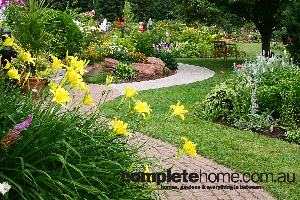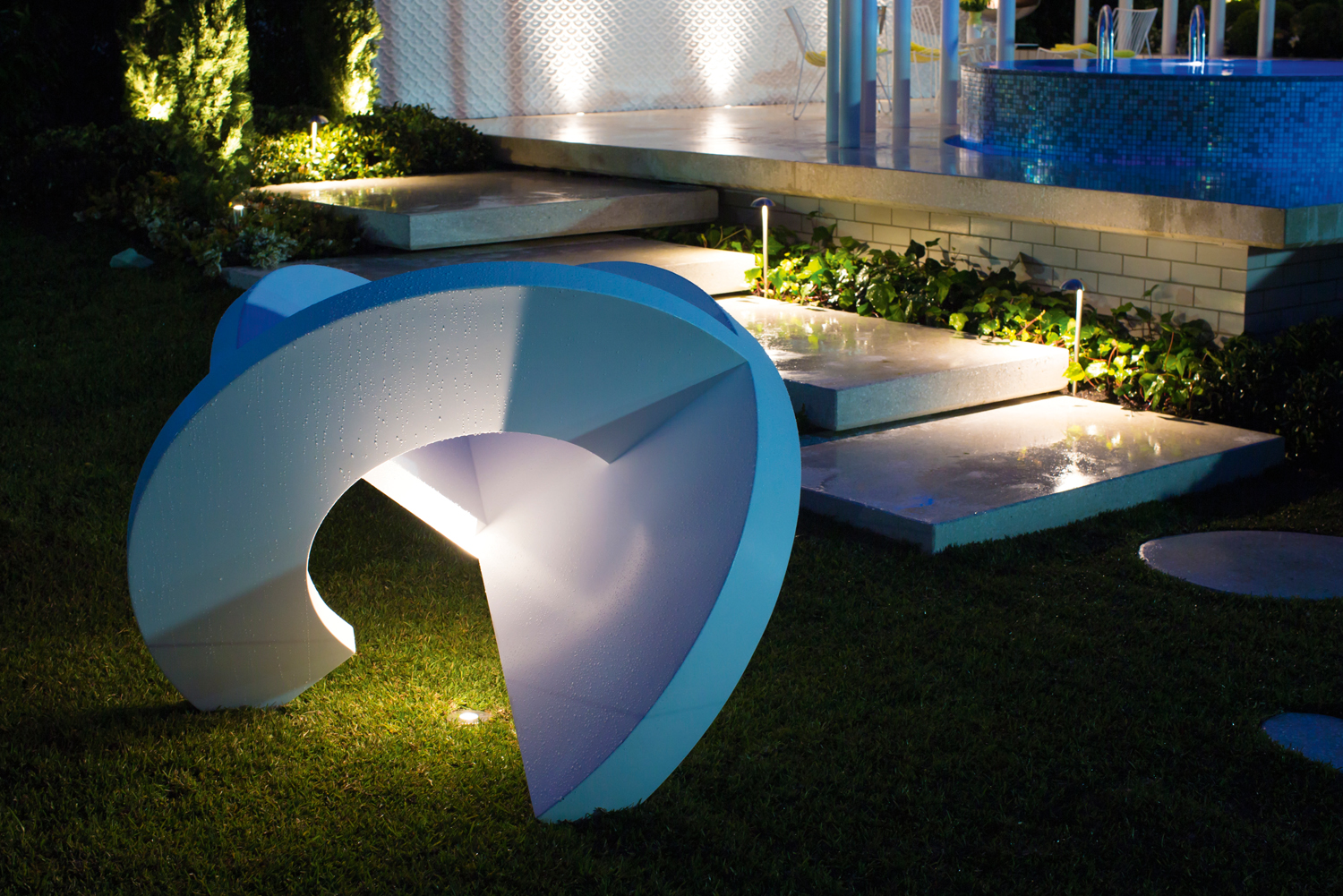A water-wise period garden combining traditional design with modern thinking
The owners of this 1930s home, located within Melbourne’s much-coveted Reid Estate, wanted a front garden that would be sympathetic to the period architecture yet easy to maintain. To make this possible and to ensure the garden’s long-term survival, they wanted to be equipped with sufficient recycled water for irrigation so they need not be hampered by water restrictions.
A casually elegant feel is created with a winding entrance path of random Mintaro slate that works its way through several level changes and past two lawn areas. Both path and lawn areas are bordered by detailed stonework, which is one of the key signatures of the design.
The entrance to the property is flanked by dry stacked Kanmantoo slate piers and walls and is connected throughout the yard with interlinking dry stacked walls. The earthy brown and grey tones of the stacked stone complement the almost velvety blue-grey of the Mintaro slate paving.
The use of Sir Walter buffalo grass, chosen because it requires minimal watering, means the lawn areas are successful in the absence of rain. Traditional planting, including upright birches, maples, crab apples and a jacaranda, enables this garden to blend flawlessly into the existing streetscape.
To the south of the slate entrance path and hidden behind a deep green “wall” of weeping lilly pilly is a paved courtyard that sits over a large underground rainwater tank. The tank, which has a capacity of approximately 30,000 litres, was built much like a concrete swimming pool with a hydrostatic valve and a concrete lid. Because of the proximity to the house, the tank construction required careful engineering.
Decorative concrete paving units (Anston Bondi pavers) were laid over the tank lid and there are two small rectangular reflective ponds sited in the paving which set the scene for quiet contemplation. Pots planted with herbs yield produce for the table and add to the appeal of the area.
This is a garden that proves you can create an authentic period look, capturing all the charm of yesteryear, yet still have a garden that is practical and responds to contemporary conditions — in this instance, the need to free the owners from their reliance on town-supplied water.
Through the use of natural materials, the careful selection of plants and the adherence to a traditional yet very practical layout, the finished front garden acknowledges the heritage of the streetscape while offering a timeless feel.
What’s more, the significant underground water tank has allowed the garden to flourish despite the drought and water restrictions.
Story: Don Thompson
Photos: Patrick Redmond
Don Thompson is a Melbourne-based landscape designer and the director of Gardenridge.





